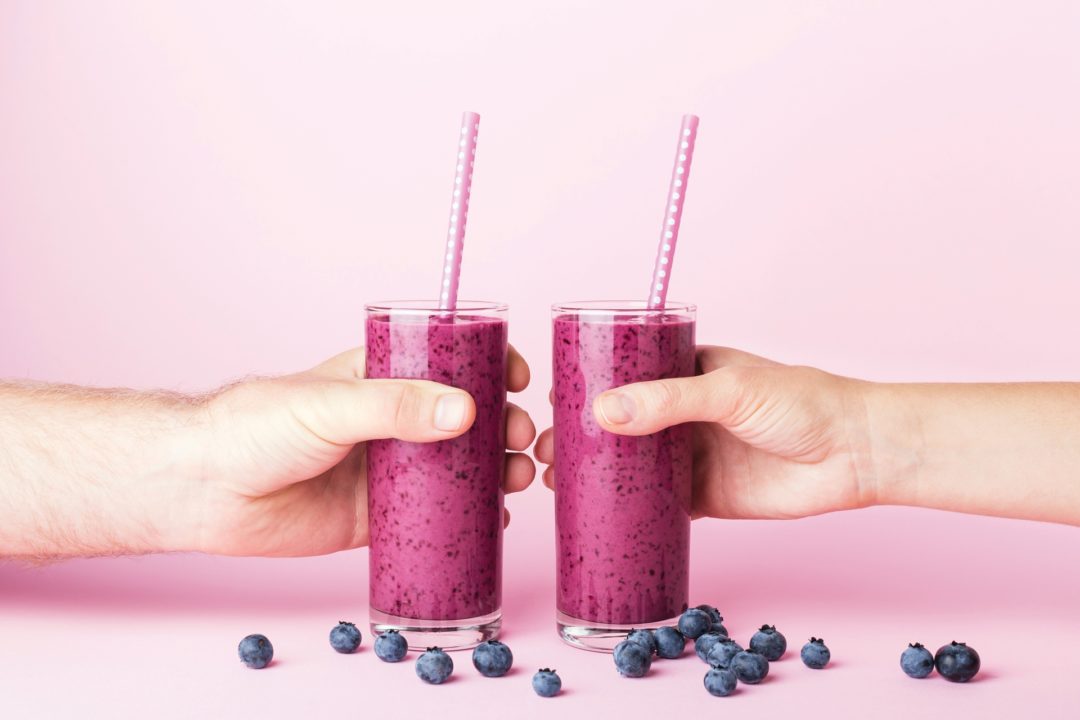Given the trend, manufacturers (including mainstream giants like Coca Cola, which has acquired a string of natural brands) are watching closely as consumers become more adventurous and seek more benefit from their beverages. Natural refreshment drinks account for only 6.6% of the beverage category, and yet are driving 31% of dollar growth (2). What’s more, the average amount of money spent on natural and health beverages over a year’s time averaged out about $30.00 more than traditional refreshments (3). Scott Uzzell, president of Venturing & Emerging Brands for Coca Cola America, has pointed out that beverage categories valued under $1 billion, which often aren’t captured thoroughly in industry data, are growing at eight times the rate of larger categories (4).
Health-conscious consumers are showing how much power they hold in driving the wellness trend, and they’re heading to their local natural products stores to get the healthier options they want. “We have a great loyal middle-aged following that wants more clean and healthy beverages,” says Nahum Guerrero, head grocery buyer at Dean’s Natural Food Market, which has 4 stores in NJ and was named WholeFoods Magazine’s 2017 Retailer of the Year. “[And] in the last few years, we have seen a tremendous growth of young shoppers turning to organic and clean products.”
The trend is also strong at Martindale’s Natural Market, a 5,150-square-foot store in Springfield, PA. “We’re seeing more and more customers who want greater nutrition from the beverages they choose,” Mike Johnson, grocery buyer for Martindale’s, tells WholeFoods.
What’s trending: Flavor & Function Researchers are busy exploring the health benefits of new and emerging drink categories like fermented, nootropic and energy-boosting beverages as consumer demand is increasing. In 2019, the cold beverage industry is likely to invest in a range of drinks focusing on plant-based protein, nootropic functionality, gut-benefits, collagen and beauty enhancements, and cannabinoid infusions (5). Further, probiotic and prebiotic beverages are capturing consumer interest, as are vegetable- and herbal-based sips (3).
“As a trending ingredient producer, we like to keep an eye on other trending ingredients and their uses or applications,” says James Oliveira, ingredients sales manager with Aiya Matcha, Aiya America Inc., Torrance, CA. “We see the trends include not only Matcha green tea, but also collagen, turmeric, ashwagandha and MCT oil. As consumers continue to demand cold beverages that are healthier, that include cleaner natural ingredients and that come in ready to drink form, we see manufacturers continuing to use these ingredients in various applications. Some beverage makers are using a combination of these trending ingredients to continue providing new, healthy beverage alternatives.”
On the retail side, Guerrero sees the functional trend playing out at Dean’s Natural Food Market. In addition to cold brews, non-dairy nitro coffees, alkaline pH waters, sparkling drinks and low sugar, he notes, “Probiotic, kombuchas, CBD drinks, and wellness shots are in constant growth.”
CBD, of course, is especially hot right now, with studies suggesting a wide range of health benefits including relief from stress, and happy customers go online to basically rave about the benefits they’ve personally enjoyed. CBD can be found in water and cold-brew coffee, as well as in sodas, fruit juices and beer: According to a report from Zacks.com, mass brands including Heineken, Molson Coors and Corona are already investing in cannabis infused beverages (6).
Sour, fermented, exotic fruit and bitter beverages are gaining popularity, as are infusions featuring spices and seasonings like jalapeno, ginger, turmeric and cardamom (3). Drinks with aloe, coconut water and chia also continue to be a hit.
For some consumers, what the beverage itself is in can matter as much as what’s in the beverage. Is the product packaging environmentally friendly? Can it be reused? From paper straws to glass, cartons and cans, consumers increasingly are concerned about the recyclability of products. A recent report from Container Recycling Institute and expert contributors from the field show that sales of disposable beverage containers have increased over the past 10 years (7).Championed by Anthony William, author of the wildly popular Medical Medium book series, which is a best-seller on Amazon, celery juice is getting a lot of attention lately. As word about the potential power of celery juice spreads on social media, more consumers may be heading to your produce section to stock up on organic celery so they can make their own fresh juice, as William advises. Others who have heard about the trend and are curious to see if it can benefit them may come looking to your beverage section for ready-made bottled options to sample. William lists a variety of benefits on his website, including calming inflammation and balancing pH (8). And while the benefits William notes are not all study-driven, many fans of his advice do go online to rave about the benefits they have personally enjoyed thanks to drinking the juice daily. That said, some experts, including WholeFoods columnist Jonny Bowden, have expressed concerns with some of William’s ways. For Bowden’s take on the Medical Medium approach, read his Nutrition Mythbuster column.Smart selling When it comes to marketing cold beverages, everything from shelf positioning to the ambiance of the store impacts whether a consumer will stop and purchase. “Today’s consumers are health conscious, purpose driven, and seek greater connections to their preferred brands,” says Nathan Effron, retail sales manager with Aiya. “Retailers should be aware of these needs and support them through use of shelf talkers and signage that capitalize on the health benefits and the story behind a brand.” For example, he says, a family-owned producer can provide retailers with the story behind their business—the company origin, the production process, pictures of the family—and that can be shared with customers through POP signage and images.
Another selling point: placement. “Since space is limited in our store, we must carefully select which products to sell in the cold beverage category,” shares Martindale’s Johnson. “Typically, customers who shop for cold beverages are looking for something on-the-go that they can drink right away. They want something they can drink with their lunch or dinner. Therefore, having cold beverages merchandised in close proximity to prepared foods is an easy way to increase sales in both categories.”
Putting products in the hot-spot areas that attract adventurous consumers, such as near the ready-to-eat meal options, can be a huge win. Placing featured trending beverages adjacent to other health food options may also work to boost sales (2). “The key is to offer those new and innovative brands and products while continuing to offer the familiar, such as ready-to-drink matcha tea or cold brew coffee,” Johnson notes. “As food trends and diets change, the demand for functional cold beverages does as well.” WFReferences
- PRNewswire, “Beverage Companies Turn to Healthy Drinks as Consumer Demand Shifts,” https://www.prnewswire.com/news-releases/beverage-companies-turn-to-healthy-drinks-as-consumer-demand-shifts-828189932.html.
- IRI Worldwide, “Finding Growth in Beverage Industry,” https://www.iriworldwide.com/en-US/Insights/Blog/Finding-Growth-in-the-Beverage-Industry.
- Food Ingredients First,“2019 beverage trends: bitter flavors, cold brew teas and Probiotic are on the menu,” https://www.foodingredientsfirst.com/news/2019-beverage-trends-bitter-flavors-cold-brew-teas-and-probiotics-are-on-the-menu-says-treatt.html.
- Coca-Cola Company, “3 Tips for Breaking into the Beverage Business,” https://www.coca-colacompany.com/stories/cokes-venturing-emerging-brands-chief-shares-3-tips-for-break?utm_source=annual-review-2017.com&utm_medium=referral&utm_campaign=Annual_Report.
- Market Intelligence, “What will we be drinking in 2019? Up & Coming Beverage Trends,” https://www.mydrinkbeverages.com/what-will-we-be-drinking-in-2019-up-coming-beverage-trends
- Zacks, “Know How Beverage Stocks Will Gain from Shift to Marijuana,” https://www.zacks.com/stock/news/324016/know-how-beverage-stocks-will-gain-from-shift-to-marijuana.
- Container Recycling Institute, “2013 Bottled Up Report,” http://www.container-recycling.org/index.php/publications/2013-bottled-up-report.
- Medical Medium, “Celery Juice,” www.medicalmedium.com/blog/celery-juice










